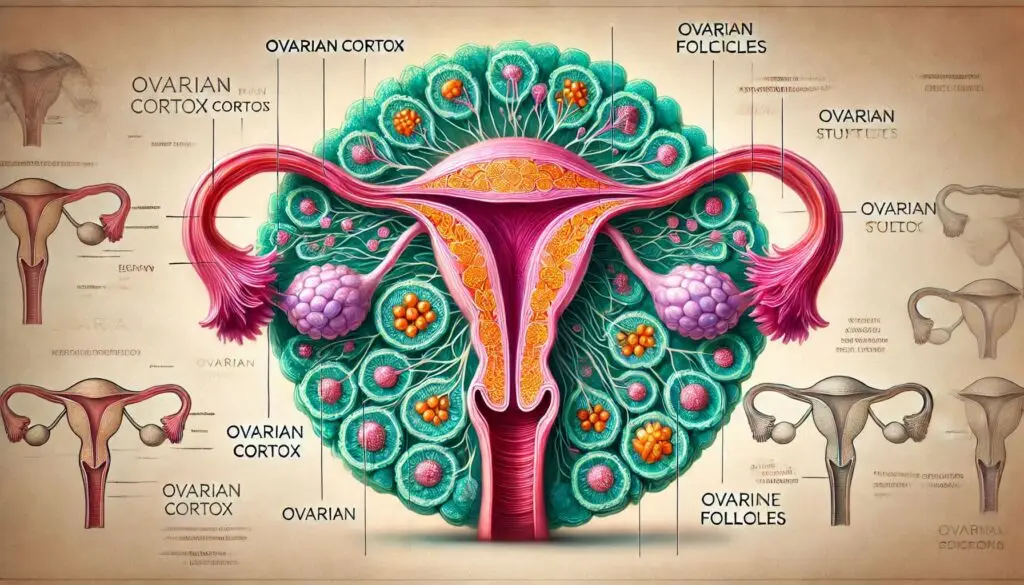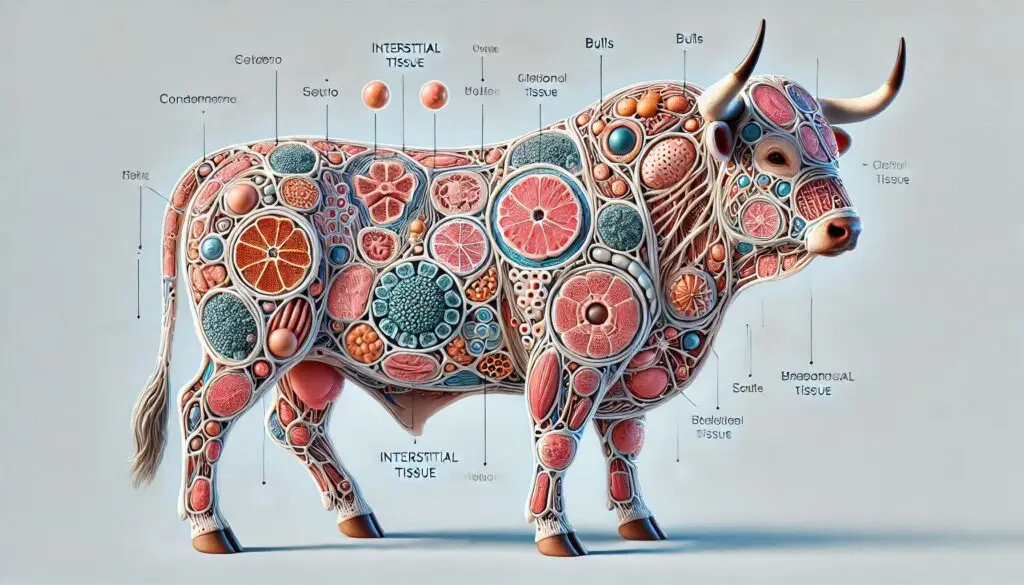Ovarian Medulla

Introduction to the Ovarian Medulla
The ovarian medulla is a vital part of the ovary. It plays a significant role in reproductive health. Understanding its structure and function can help us appreciate its importance in fertility and hormonal regulation. This article delves into the anatomy, functions, and clinical relevance of the ovarian medulla.
Structure of the Ovarian Medulla
Overview of Anatomy
Located at the center of the ovary, beneath the outer cortex. It consists primarily of loose connective tissue, blood vessels, and nerve fibers. Unlike the cortex, which contains ovarian follicles, the medulla does not house these structures.
Composition of the Medulla
- Loose Fibroelastic Tissue: This tissue provides a supportive framework.
- Vascular Network: The medulla contains a rich supply of blood vessels. These vessels are crucial for nutrient and hormone transport.
- Nerve Fibers: Nerves enter through the hilum and connect with the central nervous system.
Anatomical Relations
The medulla is continuous with the hilum of the ovary. The hilum is where blood vessels and nerves enter. This relationship is essential for maintaining ovarian health.
Function of the Ovarian Medulla
Support for Vascular Structures
One primary function of the ovarian medulla is to support its vascular structures. The dense network of blood vessels ensures that hormones and nutrients reach the ovarian follicles in the cortex. This supply is vital for follicular development and overall ovarian function.
Nervous System Integration
The presence of nerve fibers allows communication between the ovary and the central nervous system. This connection helps regulate reproductive functions such as hormone secretion and menstrual cycles.
Hormonal Regulation
The ovarian medulla plays a role in hormonal balance. Hormones produced in the ovaries affect various bodily functions. For instance, estrogen and progesterone are crucial for regulating menstrual cycles and supporting pregnancy.
Clinical Relevance of the Ovarian Medulla
Fertility Preservation Techniques
Recent studies highlight the importance of the ovarian medulla in fertility preservation. Researchers have developed techniques to isolate pre-antral follicles from this region. These follicles may hold potential for future reproductive technologies. For more information on fertility preservation techniques, you can visit Fertility Preservation.
Importance in Younger Individuals
Research shows that younger individuals may have a considerable pool of viable follicles in their ovarian medulla. This finding opens new avenues for fertility treatments and technologies.
Ovarian Disorders
Understanding the ovarian medulla can also help in diagnosing ovarian disorders. Conditions such as polycystic ovary syndrome (PCOS) can impact both the cortex and medulla. Early detection can lead to better management strategies. For further reading on PCOS, check out PCOS Awareness Association.
Research Advancements
Ongoing research continues to explore the complexities of ovarian anatomy. Studies focus on how different regions, including the medulla, contribute to overall reproductive health. For those interested in current research trends, visit Reproductive Health Research.
Conclusion
The ovarian medulla is an essential part of ovarian anatomy that supports reproductive health through its vascular and nervous connections. Understanding its structure and function can lead to advancements in fertility preservation techniques and better management of ovarian disorders. As research progresses, we can expect more insights into this vital region of the ovary.
More from Veterinary Anatomy:




Responses